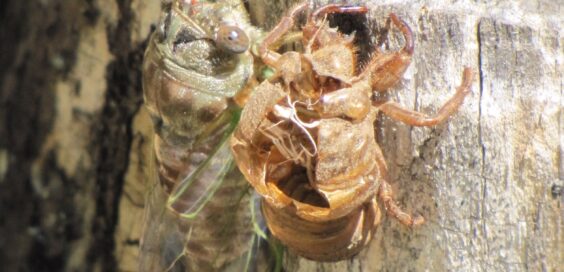
Creature Feature – The Buzz on Dog-Day Cicadas
Posted by Dustin Horton // August 5, 2020 // Articles, Creature Feature
Unlike periodic cicada species, dog-day cicadas occur annually, their buzzy drone coinciding with the hot, humid days of mid-summer. The male cicadas produce their mesmerizing mating call by vibrating special membranes located below the hind wings. This creates a rapid clicking that resonates in the air chambers of the abdomen. The call starts softly, gets louder, then winds down. The adult phase of their life lasts only a few short weeks, during which the focus is on procreating. After mating, females cut slits into the limbs of young trees and lay their eggs inside using a specialized tubular organ called an ovipositor. By fall, the ant-like larvae hatch and drop to the ground with the autumn leaves. They burrow underground and remain there in the nymph stage, sucking on root fluids as they mature. When they resurface a few years later during summertime, they must shed their exoskeleton to accommodate longer, adult bodies. The old skin splits down the back and the adult cicada emerges. The lifeless, brittle husks of the nymph are left clinging grotesquely to tree trunks, lawn chairs and window screens. During their brief stint under the hot sun, dog-day cicadas must avoid being eaten by birds, raccoons, squirrels and cicada killer wasps.
Article & Photo by Margie Manthey












